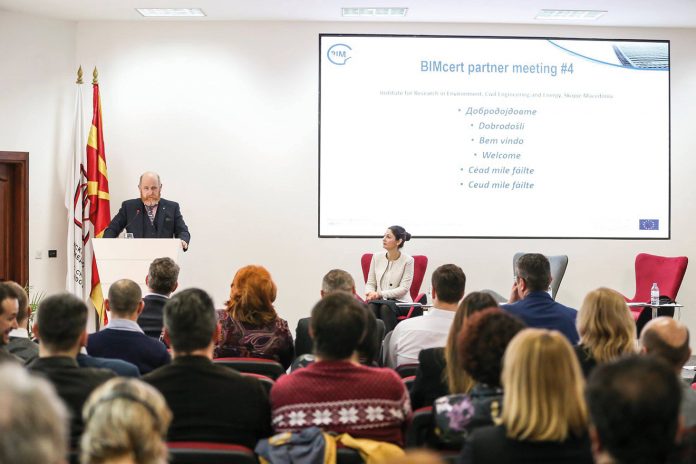BIM is a key part of the fourth revolution (digitalisation) of the AEC industry, an enabling tool for a cleaner and more sustainable build environment. This has been recognised by the European commission and a number of H2020 funded projects including BIMCert, an association focused on providing training frameworks and support in order to upskill the industry.
WHAT IS BIM?
Building Information Modelling (BIM) is a method based in modern digital technology, mainly a 3D model data enriched twin and associated set of auxiliary tools and processes, that can, among other things, be used to support sustainability trends in the construction sector.
WHY BIM UPSKILLING IS REQUIRED
There are increasing requirements for energy-efficiency competencies and applicable skills, resulting from European decarbonisation and sustainable energy long-term strategies.
Therefore, solving the problem of development of skills for sustainable energy, required by the construction sector and stimulating demand for sustainable construction and a skilled energy workforce, is closely connected to the upgrading of the BIM skills of construction professionals.
As a sustainable energy-supportive technology, BIM is a vital tool for reducing the carbon footprint in the construction sector. BIM is the backbone of the new informed way of working in the construction sector, triggered and targeted by digitisation and equipped to manage the full energy content of construction. Such is the impact of BIM that the European Commission has supported, promoted and developed several policies and initiatives aiming to foster digitalisation in the construction sector.
Digitisation and the use of BIM in the construction sector are in its infancy in some regions. The digital journey utilising BIM will generate usages and breakthroughs in the knowledge, use and results achieved through the deployment of sustainable energy skills. Now is the time for the implementation of digitisation in the construction sector to proactively and effectively reduce the carbon footprint and environmental impact of construction. BIM provides the data for a building’s energy consumption. This data can then be used as information to make informed decisions on how best to manage the entire energy circle of a building.
BIM’S CONTRIBUTION WITHIN THE FOUR SEGMENTS OF THE ENERGY LIFE CYCLE IN CONSTRUCTION
There are four segments within the energy life cycle in construction: potential, embedded, operational and sustainable energy. These four segments together account for all of the energy used in the complete construction life cycle and are mutually dependent and therefore, cannot be considered separately. Decisions and actions are not mutually exclusive; decisions made within one segment have significant impacts across the entire energy circle.
BIM-based energy modelling provides several benefits, including more accurate and complete energy performance analysis in early design stages, improved lifecycle cost analysis and more opportunities for monitoring actual building performance during the operation phase.
As we move forward, there is a need for construction techniques, policy formulation and policy implementation to be integrated into a balanced and coherent system delivering sustainability across the entire construction supply chain. However, BIM is a tool. BIM is only an enabler. Digital environment is a medium. It’s people and professionals that can make and implement the change. A tool is only as good as its operator.
The H2020 BIMcert Project is working towards offering a suitable solution. For further information on BIM training, please contact paulmccormack@belfastmet.ac.uk or visit https://energybimcert.eu/








